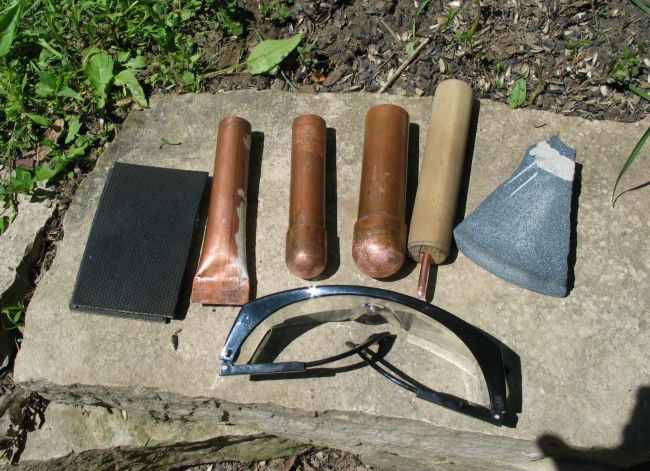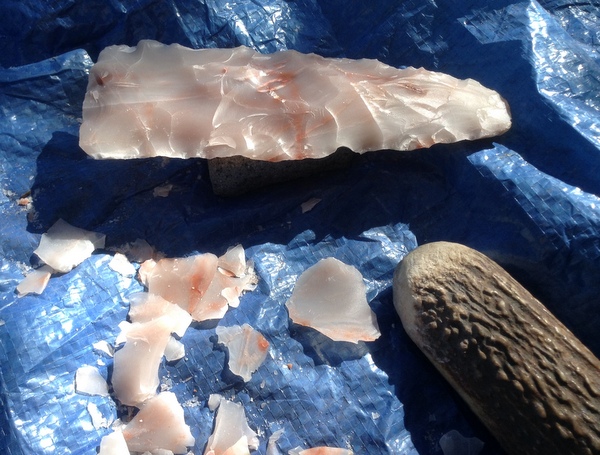


Stone undoubtedly was and still is used in completely unmodified states – many people have used a stone as a hammer at some point if nothing else is available. But what can we do with them? The first thing we must do is to recognise them and distinguish them from natural background stone. So there are lots of them, and they were made over a long period of time. A single episode of knapping can generate thousands of pieces many millions of pieces of struck flint remain to be found, each capable of telling its own small part of the story of our past.

Even for more recent periods, the effects of weather and ploughing over thousands of years means more often than not stone tools are the only surviving evidence for where people were living and what they were doing. Palaeolithic tools have survived for hundreds of thousands of years, enduring repeated Ice Ages and being washed down rivers, but we can still pick them up, see how were made and say things about their makers. Stone tools play a privileged role in archaeology as they are extremely durable and they survive through most circumstances.Flint nodules continue to be knapped for decorative building stone and flint knapping remains a popular recreational pastime. They still continued to be made for specialist purposes as strike-a-alights, for working shale and more recently as gunflints. Regular stone tool use continued thereafter until the Iron Age, around 2,000 years ago. Stone tools first appear in Africa around 3 million years ago and the earliest so far recognised in Britain, from Happisburgh in Norfolk, are nearly 1 million years old. Stone tools provide some of the earliest evidence for what we might consider human behaviour and have been made more or less continuously since the first human-like ancestors appeared.Studying the technology of making tools allows us to better understand ourselves and others. Humans are the only animals to regularly make tools and the way they do it varies across cultures.The aim of this guide is to help in recognising flint tools and in distinguishing deliberately modified from naturally occurring rocks.
Flint knapping series#
Hmmmmm.This beginner’s guide to identification of knapped flints and stone tools has been written by Barry Bishop and is one of a series of introductory guides published by the community archaeology network, Jigsaw. Maybe I should go on an exploratory expedition to Indonesia. It is also a wonder for a flintknapper to be able to knap into a beautiful creation, and no one wants more to be discovered than me. There is nothing like Indonesian coral and the wild polyp patterns are a wonder of the natural world and of geology. Will any more be found in the future? My source tells me it’s possible but not very likely. Naturaly, I will also continue to scour my resources for any good pieces I can yet acquire. The good news is that I have a small reserve of high quality coral that I will continue to work from. There is still some on the market but the supply will continue to dwindle and the high grade stuff is vanishing even faster. In other words, the deposit of this material that was discovered just a few years ago has been mined out. The bad news is that the supply has dried up. Recently, I get more questions about Indonesian Coral and the striking and unique arrowheads that can be knapped from high quality material.


 0 kommentar(er)
0 kommentar(er)
